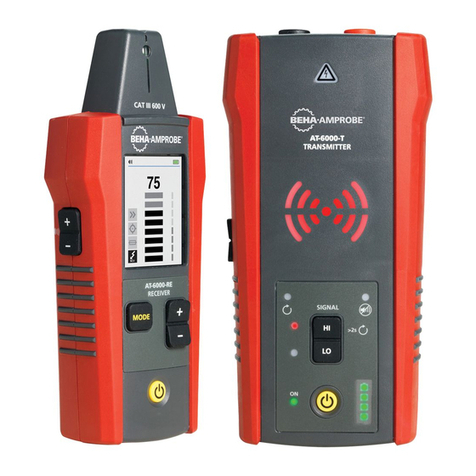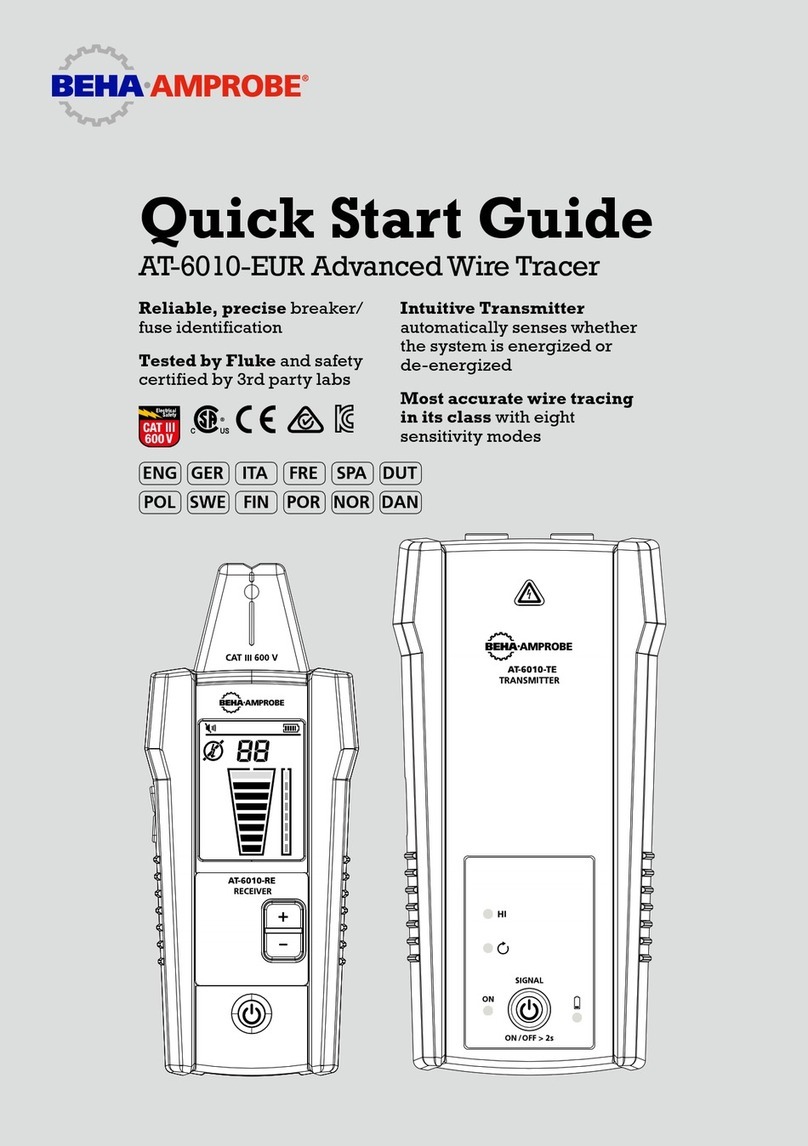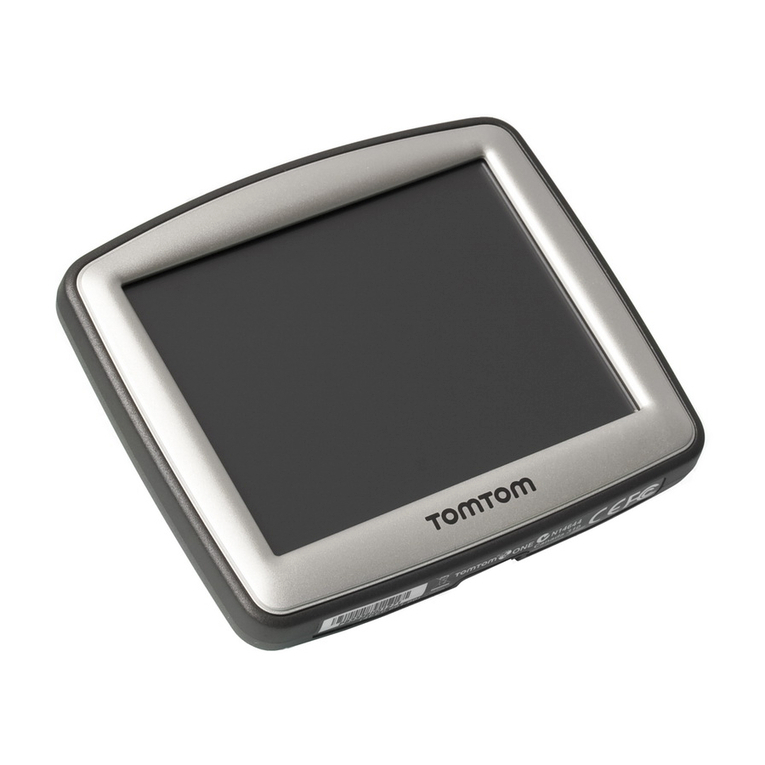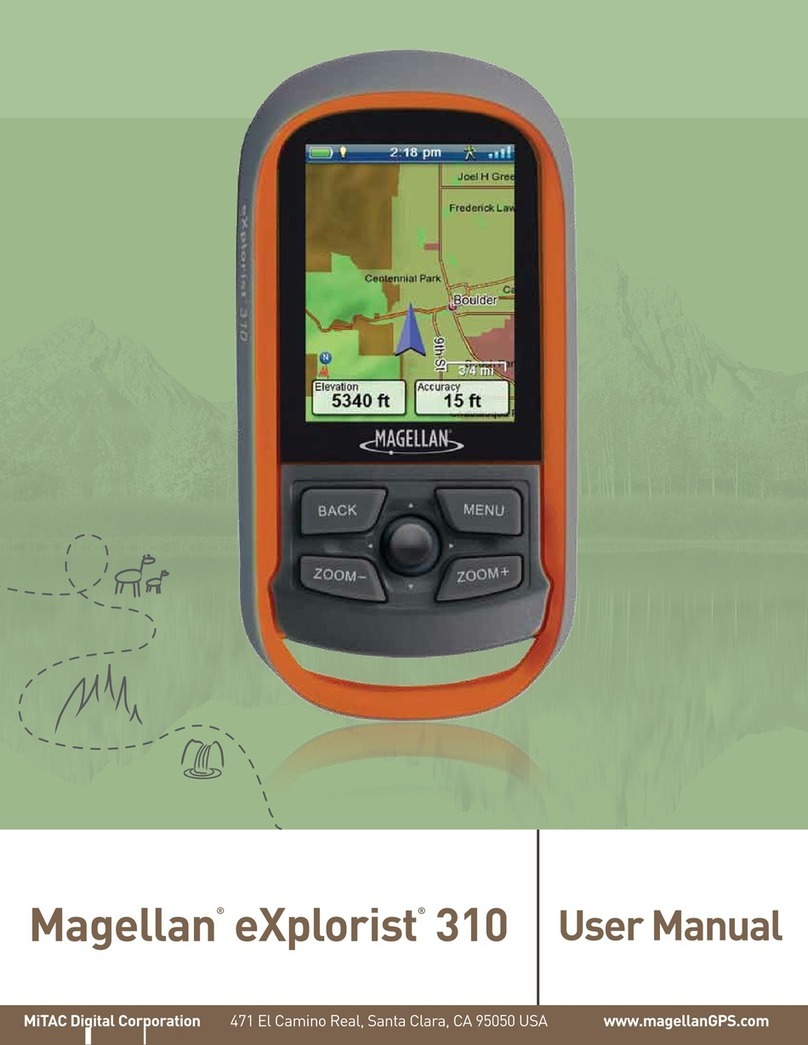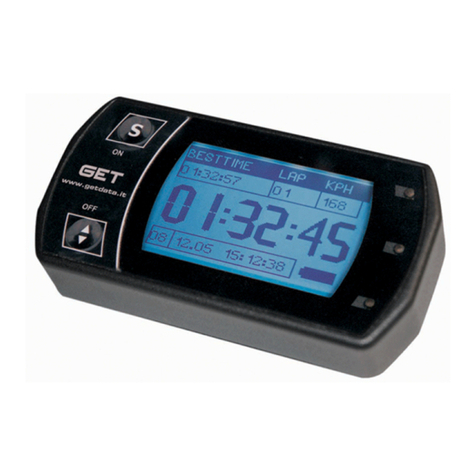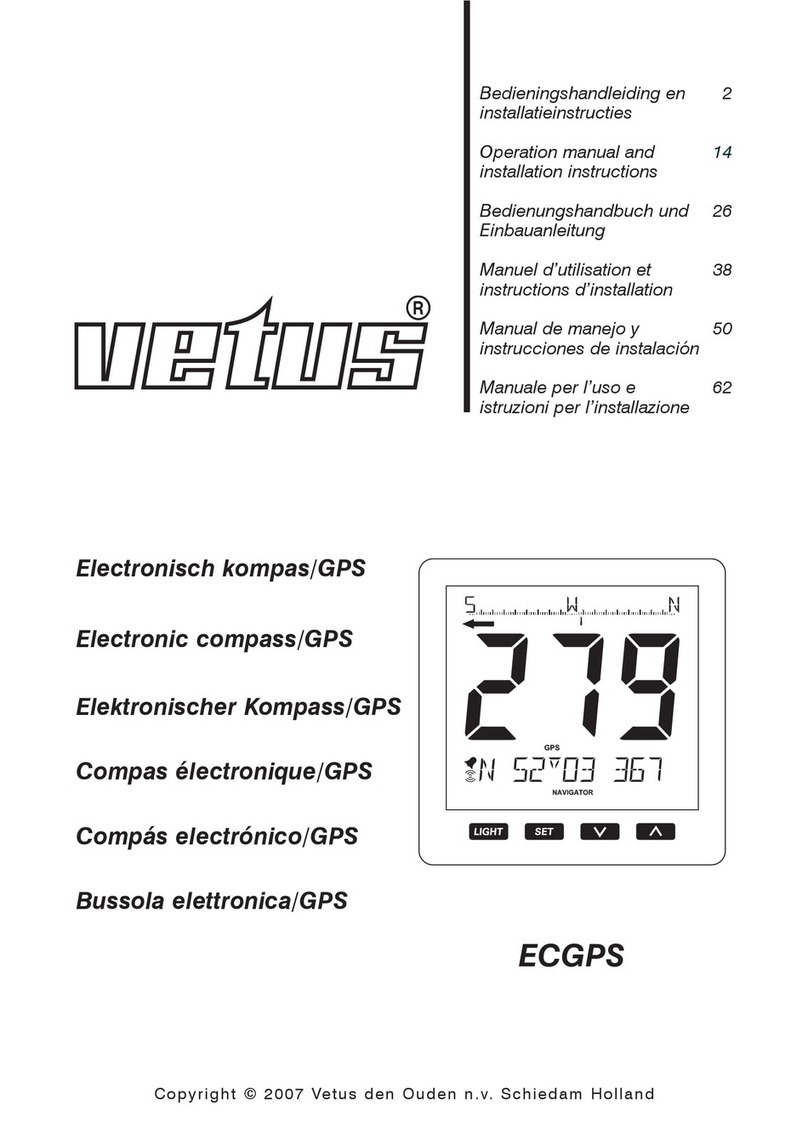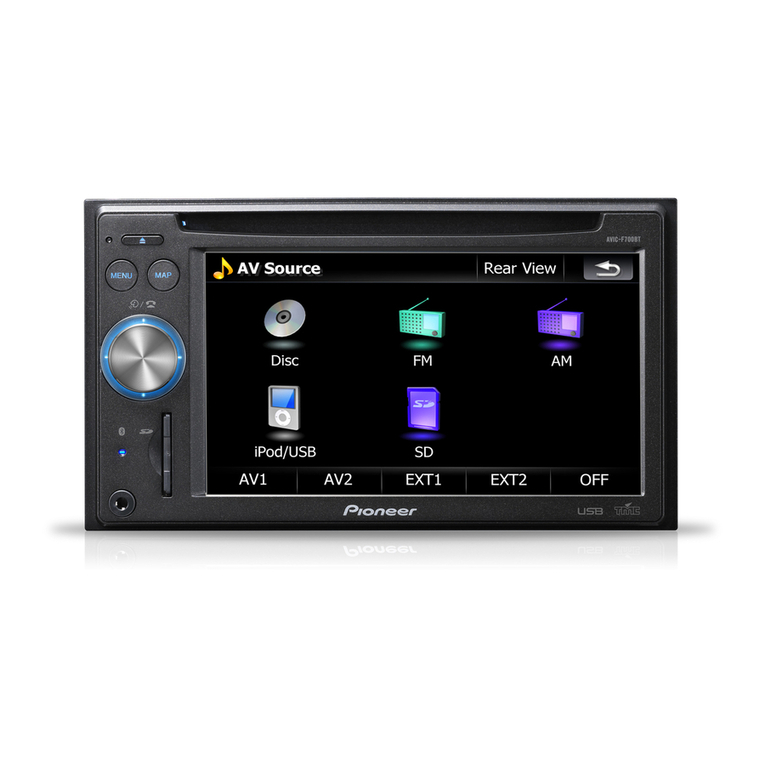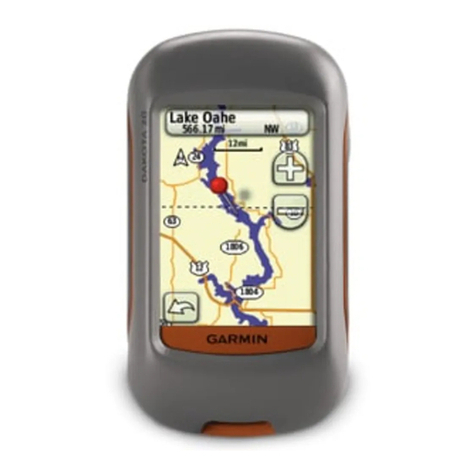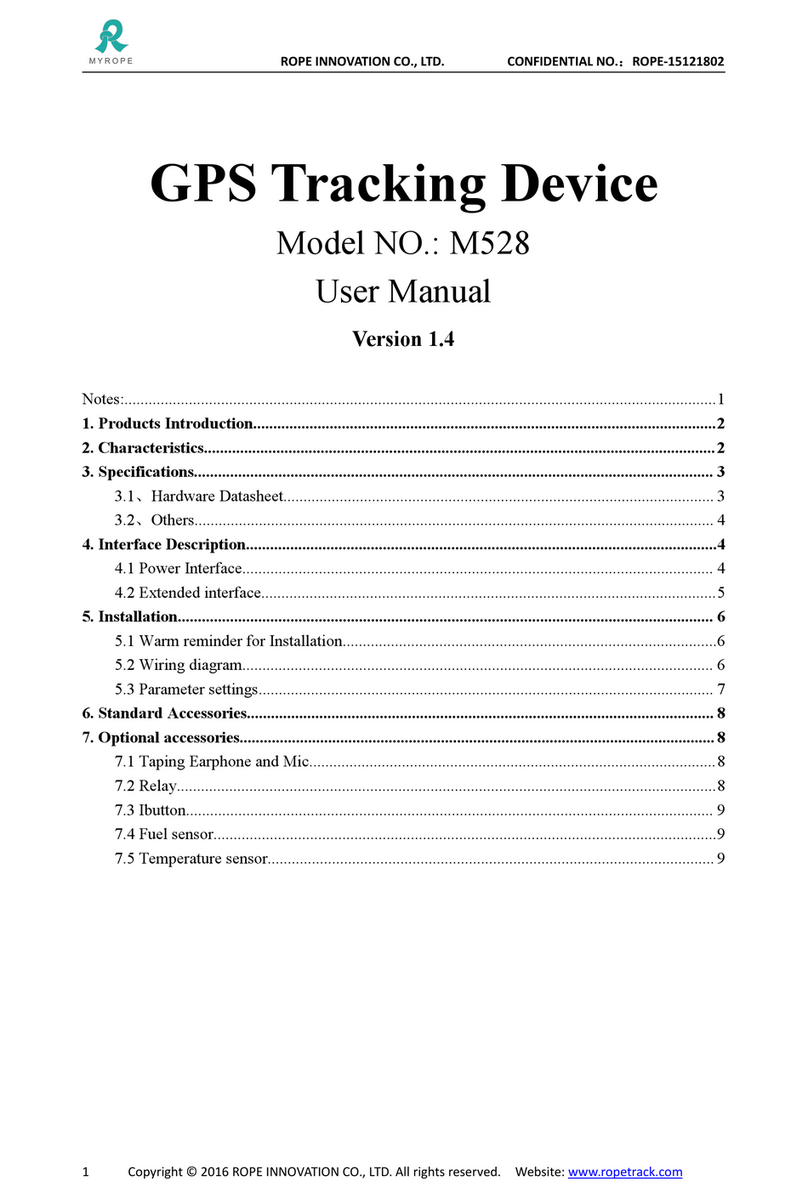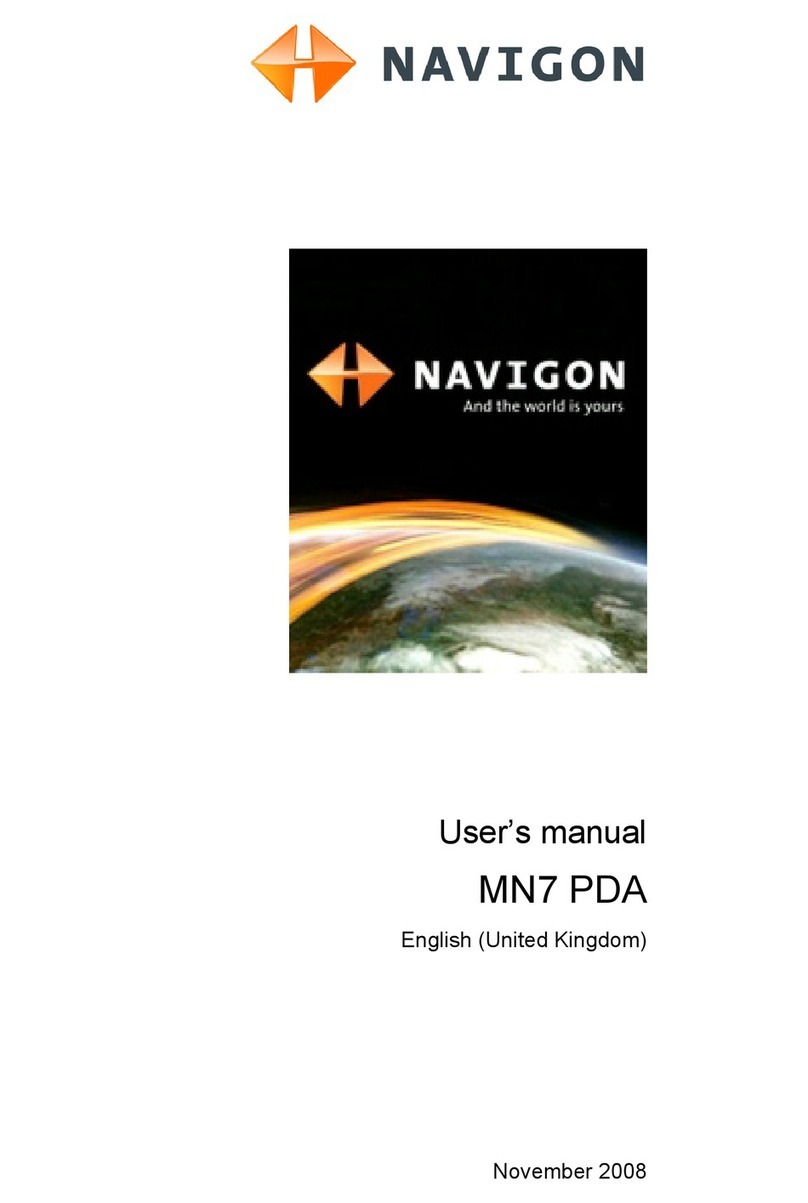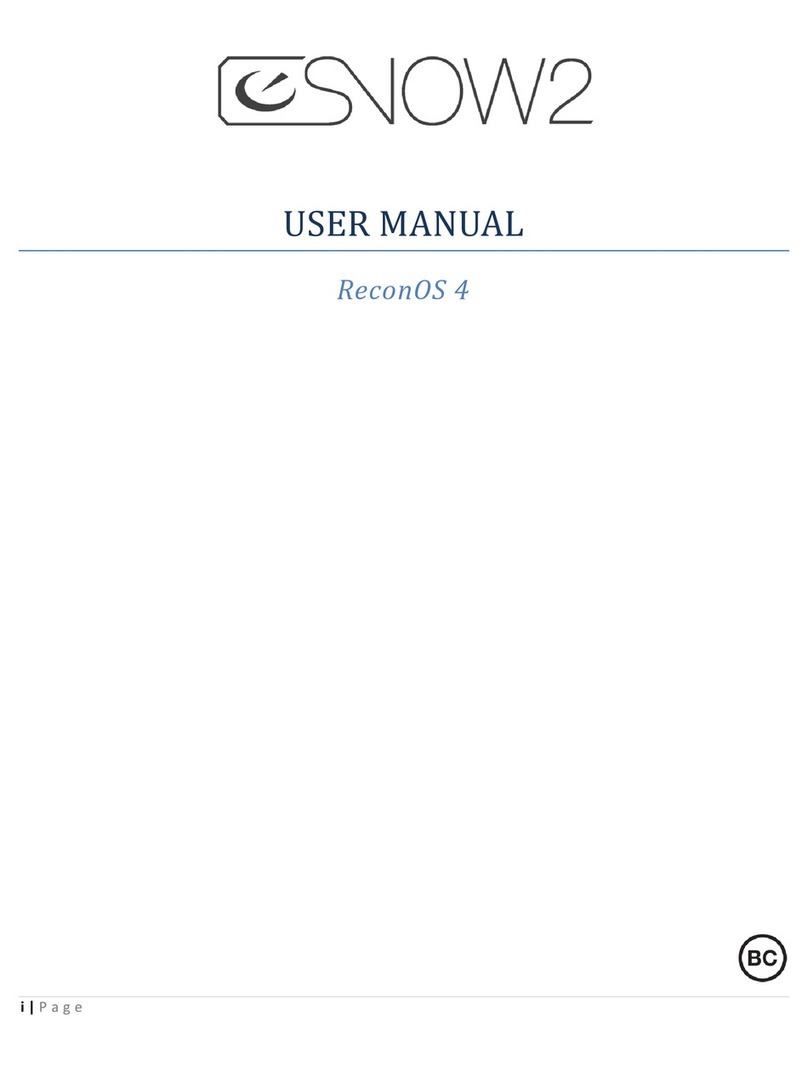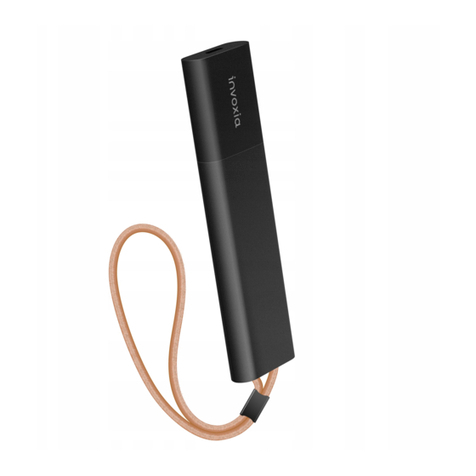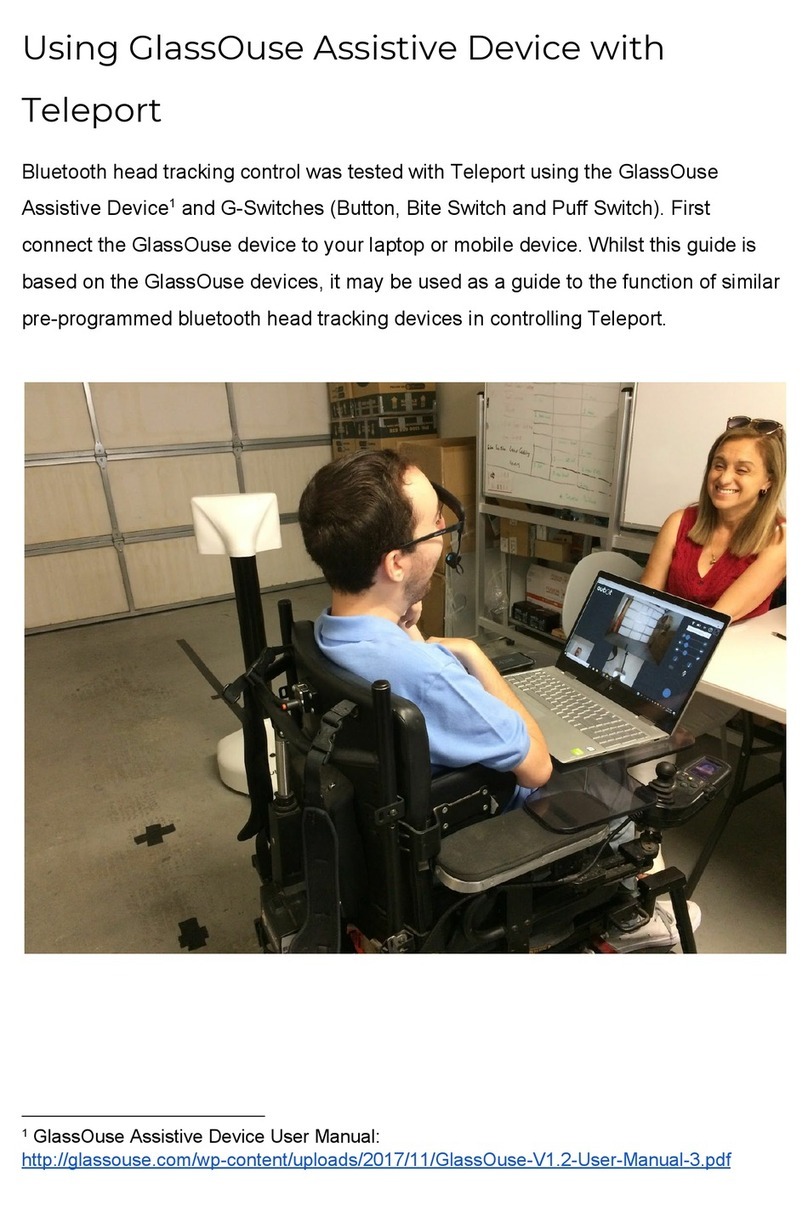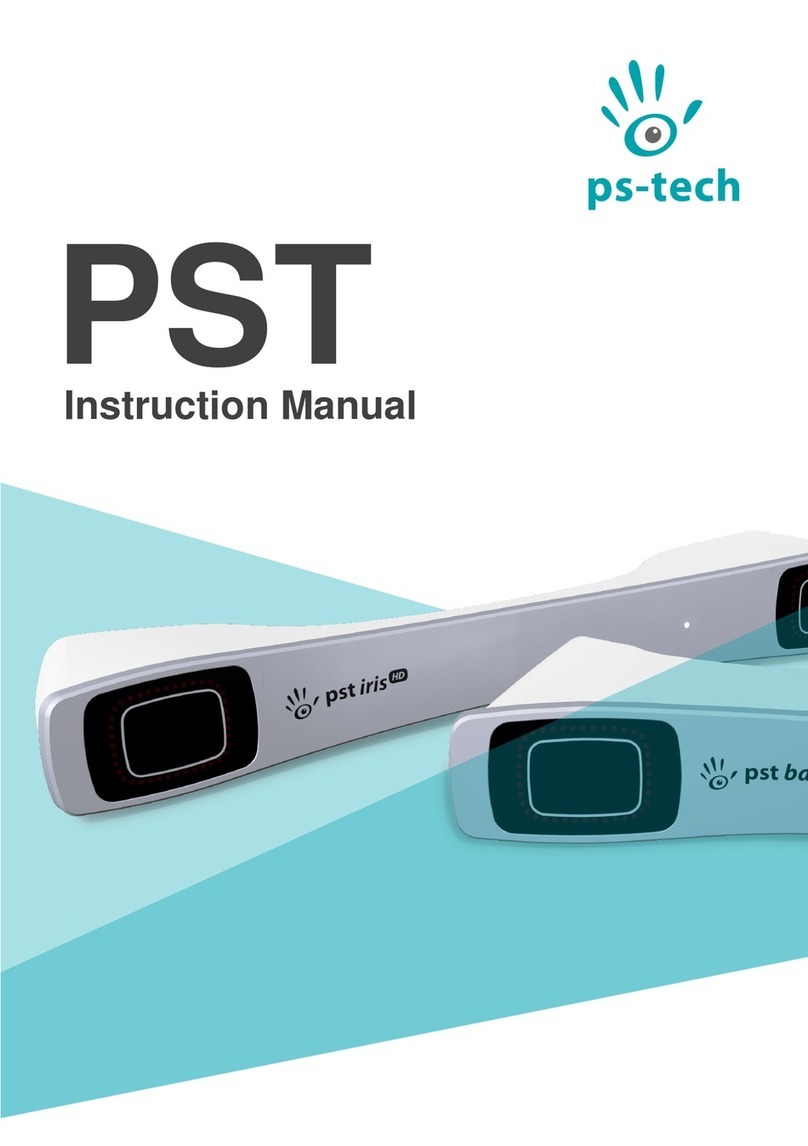Beha-Amprobe AT-8000-EUR Series User manual

AT-8000-EUR Advanced Wire Tracer
Reliable, precise
breaker/fuse identification
Tested by Fluke and safety
certified by 3rd party labs
Intuitive Transmitter
automatically senses whether
the system is energized or
de-energized
Most accurate wire tracing
in its class with 10
sensitivity modes
Quick Start Guide
AT-8000-RE
RECEIVER
TRANSMITTER
HI
LO
AT-8000-TE
ENG GER ITA FRE SPA DUT POL
SWE FIN POR NOR DAN CZE

AT-8000-EUR Advanced Wire Tracer

Quick Guide Table of Contents
Tracing Energized Wires - Smart SensorTM ................................... 2
Tracing Energized and De-energized Wires - Tip Sensor ................ 3
Connecting Transmitter to an Energized Working System .............. 4
Identifying Energized and De-energized Breakers and Fuses ......... 5
NCV Mode .............................................................................. 6
Finding Breaks and Opens ........................................................ 7
Finding Shorts ......................................................................... 8
Wire Tracer Specications ......................................................... 9
Accessory Specications and Included in Wire Tracer Kits........... 10
AT-8000-EUR Advanced Wire Tracer
Special Applications:
• RCD-protected circuit wire tracing
• Find breaks, openings, and shorts
• Trace wires in metal conduit: junction box method
• Trace non-metallic pipes and conduits
• Trace shielded wires
• Trace underground wires
• Trace low voltage wires and data cables
• Sort bundled wires
• Map circuits using test leads connection
• Trace breakers/fuses on system with light dimmers
• CT-400-EUR signal clamp (optional accessory) to improve accuracy and
performance when there is no access to bare conductors
See the user manual for further instructions regarding special applications.
©2020 Beha-Amprobe® For detailed specications and ordering go to beha-amprobe.com 6012405 B 1
English

Beha-Amprobe®
AT-8000-EUR
2
Tracing Energized Wires - Smart SensorTM
TIP: For best results, keep the Receiver at least 1 m
(3 feet) from the Transmitter and its test leads to
minimize signal interference and improve wire
tracing results. Select the “Long” Smart SensorTM
Range in the Settings Menu if working with
wires that are greater than 1 m (3 feet) deep.
Receiver:
Energized Smart SensorTM Mode
The Smart SensorTM enables easier wire tracing by
showing the direction and position of the wire and is the
recommended method for tracing Energized wires.
Set-up:
Test Leads
Set-up:
Transmitter
1. Plug the green and red test leads into the Transmitter.
2. Connect the green wire to a separate neutral.
3. Connect the red test lead to the wire being traced,
For receptacles, make sure to connect the test lead to
the line/phase wire. For Energized systems the signal
will ONLY be transmitted between the load-side to
which the Transmitter is connected and the source
of power.
1. Turn on the Transmitter.
2. Verify that the test leads are properly connected;
the red LED voltage status light should be on for
circuits with voltage above 30 V AC/DC.
3. Select HIGH signal mode by pressing HI.
2
1
1. Turn on the Receiver and select SMART SENSORTM
mode using the directional arrows.
2. Hold the Receiver with the Smart SensorTM facing
the target area.
3. Move the Receiver in direction indicated by the
arrow on the screen. If the screen ashes a “?”
in a red target then either no signal is detected
or the signal is not adequate enough to display
direction; increase the sensitivity using the “+”
button on the Receiver.
4. Press ENTER when complete to return to the
home screen.
AT-8000-T
TRANSMITTER
HI
LO
Blinking
Transmitter
indicator showing
signal in
HIGH mode
ENERGIZED:
DE-ENERGIZED:
--
Receiver locked on wire
AT-8000-TE

TIP: In Energized mode, align the groove on the Tip
Sensor with the wire direction for best results; the
signal may not be detected without this alignment.
De-energized mode uses a different antenna in the
Tip Sensor than Energized mode. Specic alignment
of the Tip Sensor groove to the wire is not required.
De-energized wire tracing results are based only on
how close the Tip Sensor is to the wire.
©2020 Beha-Amprobe® For detailed specications and ordering go to beha-amprobe.com 6012405 B 3
Advanced Wire Tracer - Quick Guide
Tracing Energized and De-energized Wires - Tip Sensor
Receiver:
Energized and De-energized
Tip Sensor Modes
Use this mode for pinpointing a wire in a bundle or
tracing in corners and confined spaces such as junction
boxes and inside enclosures.
1. Turn on the Receiver and select either Energized
or De-energized TIP SENSOR mode using the
directional arrows.
2. Hold the Receiver with the Tip Sensor facing the
target area.
3. Scan the target area with the Tip Sensor to nd the
highest signal level, then begin tracing the detected
wire. Increase or decrease sensitivity of the Receiver
by pressing + or - on the keypad as necessary.
4. Press ENTER when complete to return to the
home screen.
Receiver screen showing signal detected in
Energized TIP SENSOR mode
30-600V AC/DC
40-400 HZ
TIP SENSOR ENERGIZED
75
SIGNAL
Aligning the Tip Sensor with the wire
Tip groove
Align
Set-up:
Test Leads
Set-up:
Transmitter
1. Plug the green and red test leads into the Transmitter.
2. Connect the green wire to a separate neutral.
3. Connect the red test lead to the wire being traced,
For receptacles, make sure to connect the test lead to
the line/phase wire. For Energized systems the signal
will ONLY be transmitted between the load-side to
which the Transmitter is connected and the source
of power.
1. Turn on the Transmitter.
2. Verify that the test leads are properly connected;
the red LED voltage status light should be on
for circuits with voltage above 30 V AC/DC, and
it should be off for De-energized circuits below
30 V AC/DC.
3. Select HIGH signal mode by pressing HI.
2
1
AT-8000-T
TRANSMITTER
HI
LO
Blinking
Transmitter
indicator showing
signal in
HIGH mode
AT-8000-TE

Beha-Amprobe®
AT-8000-EUR
4
Connecting Transmitter to an Energized Working System
Identifying Energized and De-energized Breakers and Fuses
Set-up:
Test Leads Set-up:
Transmitter
1 2
1. Plug the green and red test leads into the Transmitter.
2. Connect the green wire to a separate neutral.
3. Connect the red test lead to the wire being traced, For
receptacles, make sure to connect the test lead to the
line/phase wire. For Energized systems the signal will
ONLY be transmitted between the load-side to which
the Transmitter is connected and the source of power.
Note: Simplied direct connection can also be used to
connect the Transmitter (refer to the user manual for
further instructions).
1. Turn on the Transmitter.
2. Verify that the test leads are properly connected;
the red LED voltage status light should be on
for circuits with voltage above 30 V AC/DC, and
it should be off for De-energized circuits below
30 V AC/DC.
3. Select HIGH signal mode by pressing HI.
AT-8000-T
TRANSMITTER
HI
LO
Blinking
Transmitter
indicator showing
signal in
HIGH mode
AT-8000-TE
The Transmitter, with the red test lead, can be directly connected
to the live wire of the working electrical equipment under load
(motor, electronics, etc). Tracing can be performed without
needing to turn off the equipment or switching power off.
AT-8000-TE

©2020 Beha-Amprobe® For detailed specications and ordering go to beha-amprobe.com 6012405 B 5
Advanced Wire Tracer - Quick Guide
Identifying Energized and De-energized Breakers and Fuses
Step 2 - 2LOCATE
1. Select LOCATE mode by using the
directional arrows.
2. Rescan each breaker by touching each with
the Tip Sensor for one second. Active red
arrow indicates scanning process. Scan all
breakers until solid green arrow and audible
alert (continuous beep) indicates that the
correct breaker was found.
3. Press ENTER when complete to return to
the home screen.
Step 1 - 1SCAN
1. Turn on the Receiver and select either
Energized BREAKERS mode or De-Energized
BREAKERS mode using the directional arrows.
2. Align the groove on the Tip Sensor with the
breaker/fuse lengthwise.
3. Scan each breaker/fuse by touching it with
the Tip Sensor. To assure sufcient time
between the scans, wait for active green
arrow and audible alert before moving to
the next breaker/fuse. The order of scanning
does not matter. You can scan breakers/fuses
multiple times. The Receiver records the
highest detected signal.
Receiver:
BREAKERS Mode
Tracing breakers/fuses is a two-step process:
1. SCAN - Scan each breaker/fuse for one second. The Receiver
will record tracing signal levels.
2. LOCATE - The Receiver will indicate the single breaker/fuse
with the strongest recorded signal.
Correct alignment of the
Tip Sensor to the breaker/fuse

Beha-Amprobe®
AT-8000-EUR
6
NCV Mode
Receiver:
NCV Mode
The NCV (Non-ContactVoltage) mode is used to
verify that a wire is Energized. This method does
not require the use of the Transmitter.The Receiver
will detect an Energized cable if the voltage is
between 90V and 600 V AC and between 40 Hz
and 400 Hz.No current flow is necessary.
1. Turn on the Receiver and press the NCV button.
2. Hold the Receiver with the Tip Sensor facing the
target area.
3. Scan the target area with the Tip Sensor to nd the
highest signal level, then begin tracing the detected
wire. For precise pinpointing of line/phase wire
versus neutral wire, increase or decrease sensitivity
by pressing + or – on the keypad.
4. Press ENTER when complete to return to the
home screen.
Voltage detection in NCV mode using Tip Sensor
Note: For safety, before working with wires, always
verify that they are De-energized with an additional
voltage tester.
AT-8000-RE
RECEIVER

©2020 Beha-Amprobe® For detailed specications and ordering go to beha-amprobe.com 6012405 B 7
Advanced Wire Tracer - Quick Guide
Finding Breaks and Opens
Note: For best results, ground all
De-energized wires that run in
parallel with the black test lead.
Tracing a cable to find breaks or opens
Set-up:
Transmitter Set-up:
Receiver
1. Start tracing the cable until the
signal stops.
2. Verify the place of the fault:
move the Transmitter to the other
end of the wire and repeat tracing
from the opposite end. If the signal
stops at the exact same location the
fault has been located.
1. Turn on the Transmitter.
2. Verify that the test leads are properly connected;
the red LED voltage status light should be off for
De-energized circuits below 30 V AC/DC.
3. Select HIGH signal mode by pressing HI.
1 2
1. Turn on the Receiver
and perform tracing
in De-energized
TIP SENSOR mode.
AT-8000-RE
RECEIVER
AT-8000-T
TRANSMITTER
HI
LO
BLINKING
Transmitter
indicator showing
signal in
HIGH mode

Beha-Amprobe®
AT-8000-EUR
8
Finding Shorts
Tracing a cable to find shorts
Set-up:
Transmitter Set-up:
Receiver
1. Start tracing the cable until the signal stops.
2. Verify the place of the fault: move the
Transmitter to the other end of the wire and
repeat tracing from the opposite end. If the
signal stops at the exact same location the
fault has been located.
1. Turn on the Receiver
and perform tracing
in Energized
TIP SENSOR mode.
1. Turn on the Transmitter.
2. Verify that the test leads are properly connected;
the red LED voltage status light should be off for
De-energized circuits below 30 V AC/DC.
3. Turn the Transmitter to Loop mode by pressing HIGH
button for two seconds. Verify that the Loop LED is ON.
1 2
Note: This method will be affected
by signal cancellation effect. Expect
a relatively weak signal.
AT-8000-RE
RECEIVER
AT-8000-T
TRANSMITTER
HI
LO
BLINKING
Transmitter
indicator showing
signal in
Loop mode

©2020 Beha-Amprobe® For detailed specications and ordering go to beha-amprobe.com 6012405 B 9
Advanced Wire Tracer - Quick Guide
Specications
AT-8000-RE Receiver AT-8000-TE Transmitter CT-400-EUR Signal Clamp
Measurement Category CAT IV 600 V CAT IV 600 V CAT IV 600 V,
CAT III 1000 V
Operating Voltage 0 to 600 V AC/DC 0 to 600 V AC/DC 0 to 1000 V AC
Operating Frequency Energized: 6.25 kHz
De-Energized: 32.768 kHz Energized/Loop: 6.25 kHz
De-Energized: 32.768 kHz
Loop Mode: 6.25 kHz
High / Low Mode: 32.768 kHz
AC current measurement: 45 Hz to 400 Hz
Voltage Detection See NCV detection > 30 V AC/DC N/A
Signal Indications Numeric bar graph display and audible beep LEDs and audible beep N/A
Response Time
Smart mode: 750 mSec
Tip Sensor Energized: 300 mSec
Tip Sensor De-Energized: 750 mSec
NCV: 500 mSec
Battery monitoring: 5 Sec
Line/phase voltage monitoring: 1 sec
Battery voltage monitoring: 5 sec Instantaneous
Current Output of Signal
(typical) N/A
Energized circuit:
HI mode: 60 mA RMS
LO mode: 30 mA RMS
De-energized circuit:
HI mode: 130 mA RMS
LO mode: 40 mA RMS
Loop mode: 160 mA RMS
1 mA/A for AC current measurement
with multimeter
Signal Voltage Output
(nominal) N/A
De-energized circuit:
LOW: 29 V RMS, 120 Vp-p
HIGH: 33 V RMS, 140 Vp-p
Loop model: 31 V RMS, 120 Vp-p
De-energized circuit:
2.4 V RMS, 24 Vp-p
Range Detection (open air)
Smart mode
Pinpointing: Around 5 cm (1.97-in) radius (±2%)
Direction indication: Up to 1.5 m (5 FT) (±2%)
TIP Sensor: Energized
Pinpointing: Around 5 cm (1.97-in) (±1%)
Detection: Up to 6.7 m (22 FT) (±1%)
TIP Sensor: De-Energized
Detection: Up to
4.3 m (14 FT)
(±5%)
NCV (40-400 Hz)
Pinpointing: Around 5 cm (1.97-in) radius (±5%)
Detection: Up to 1.2 m (4 FT) (±5%)
N/A N/A
Display Size 89 mm (3.5 in) LEDs N/A
Display Dimensions (W x H) 70 x 52 mm (2.76 x 2.07 in) N/A N/A
Display Resolution 320 x 240 N/A N/A
Display Type Color TFT LCD LEDs N/A
Display Color Yes Operating mode LEDs: red
Battery status LEDs: green, yellow, red N/A
Booting Time 30 sec < 2 sec N/A
Backlight Yes N/A N/A
Operating Temperature -20 °C to 50 °C (-4 °F to 122 °F) 0 °C to 50 °C (32 °F to 122 °F)
Operating Humidity
45%: -20 °C to <10 °C (-4 °F to <50 °F)
95%: 10 °C to <30 °C (50 °F to <86 °F)
75%: 30 °C to <40 °C (86 °F to <104 °F)
45%: 40 °C to 50 °C (104 °F to 122 °F)
95%: 10 °C to <30 °C (50 °F to <86 °F)
75%: 30 °C to <40 °C (86 °F to <104 °F)
45%: 40 °C to 50 °C (104 °F to 122 °F)
Storage Temperature and
Humidity
-20 °C to 70 °C (-4 °F to 158 °F),
<95% RH -20 °C to 60 °C (-4 °F to 140 °F),
<95% RH
Operating Altitude 0 to 2000 m (6561 ft)
Tran s ient Protecti o n N/A 8.00 kV (1.2/50µS surge) N/A
Pollution Degree 2
IP Rating IP 52 IP 40
Drop Test 1 m (3.28 ft)
Power Supply 4 x AA (alkaline or NiMH rechargeable) 8 x AA (alkaline or NiMH rechargeable) N/A
Power Consumption
(typical) 4 x AA battery: 2W
Hi/Lo mode: 70 mA
Loop mode with Clamp: 90 mA
Consumption without signal
transmission: 10 mA
N/A
Battery Life (typical) Approx. 9 h Hi/Lo mode: approx. 25 h
Loop mode: approx. 18 h N/A
Low Battery Indication Yes Yes N/A
Fuse N/A 1.6 A, 700 V, fast-acting, Ø 6x32mm N/A
Maximum Conductor Size N/A N/A 32 mm (1.26 in)
Dimensions (L x W x H) Approx. 278 x 113 x 65 mm
(10.92 x 4.43 x 2.55 in) Approx. 183 x 93 x 50 mm
(7.2 x 3.66 x 1.97 in) Approx. 150 x 70 x 30 mm
(5.9 x 2.75 x 1.18 in)
Weight (batteries installed) Approx. 0.544 kg (1.20 lb) Approx. 0.57 kg (1.25 lb) Approx. 0.114 kg (0.25 lb)
Certications

Beha-Amprobe®
AT-8000-EUR
10
Accessory Specications
ADPTR-SCT TL-8000-EUR
Measurement Category CAT II
CAT IV 600 V (test leads)
CAT IV 600 V (alligator clips)
CAT II 1000V (test probes)
Operating Voltage and Current 102 to 253 V AC, 4 A max.
600 V, 10 A max. (red/black leads)
600 V, 6 A max. (green lead)
600 V, 10 A max. (alligator clips)
1000 V, 8 A max. (test probes)
Operating Temperature 0 °C to 40 °C (32 °F to 104 °F) 0 °C to 50 °C (32 °F to 122 °F)
Operating Humidity ≤ 80% RH
95%: 10 °C to <30 °C (50 °F to <86 °F)
75%: 30 °C to <40 °C (86 °F to <104 °F)
45%: 40 °C to <50 °C (104 °F to <122 °F)
Storage Temperature and Humidity 0 °C to 40 °C / 32 °F to 104 °F,
≤ 80% RH -20 °C to 60 °C (-4 °F to 140 °F), <95% RH
Operating Altitude 0 to 2000 m (6561 ft) 0 to 2000 m (6561 ft)
Pollution Degree 2 2
IP Rating IP 40 IP 20
Drop Test 1 m (3.28 ft) 1 m (3.28 ft)
Dimensions Approx. 75 x 50 x 65 mm
(2.95 x 1.97 x 2.56 in)
Red/black leads: 1 m (3.28 ft)
Green lead: 7 m (22.97 ft)
Alligator clips: approx. 95 x 45 x 24 mm (3.74 x 1.77 x 0.94 in)
Outlet adapters: 72 x 18 x 18 mm (2.83 x 0.71 x 0.71 in)
Weight Approx. 0.057 kg (0.125 lb) Approx. 0.4 kg (0.88 lb)
Certications
*TL-8000-EUR test lead and accessory kit includes:
• 2 x 1 m test leads (red, black): CAT IV 600 V
• 1 x 7 m test lead (green): CAT IV 600 V
• 2 x Alligator clips (red, black): CAT IV 600 V
• 2 x Outlet blade adapters (red, black): CAT II 300 V
• 2 x Outlet round adapters (red, black): CAT II 300 V
Optional accessories:
HS-1 Magnetic hanger
TL-8000-25M Test lead
CT-400-EUR Signal clamp
Included in Wire Tracer Kits
AT-8020-EUR KIT AT-8030-EUR KIT
AT-8000-RE RECEIVER 1 1
AT-8000-TE TRANSMITTER 1 1
TL-8000-EUR TEST LEAD AND ACCESSORY KIT* 1 1
CC-8000-EUR HARD CARRYING CASE 1 1
BATTERY CHARGERS -3
RECHARGEABLE BATTERIES NiMH
TYPE 1.2 V AA (IEC LR6) -12
BATTERIES ALKALINE 1.5 V AA (IEC LR6) 12 -
CT-400-EUR SIGNAL CLAMP -1
ADPTR-SCT-xx Socket adapter 1 1
HS-1 MAGNETIC HANGER -1
USER MANUAL 1 1
QUICK START GUIDE 1 1

©2020 Beha-Amprobe® For detailed specications and ordering go to beha-amprobe.com 6012405 B 11
Advanced Wire Tracer - Quick Guide

Beha-Amprobe©
Division of Fluke Corp. (USA)
c/o Fluke Europe BV
In den Engematten 14
79286 Glottertal, Germany
Tel. +49 (0) 7684 - 8009-0
beha-amprobe.de
Science Park Eindhoven
5110 NL-5692 EC Son
The Netherlands
Tel. +31 (0) 40 267 51 00
beha-amprobe.com
52 Hurricane Way
NR6 6 JB United Kingdom
e-mail: [email protected]
beha-amprobe.com
Other manuals for AT-8000-EUR Series
1
Table of contents
Other Beha-Amprobe GPS manuals
